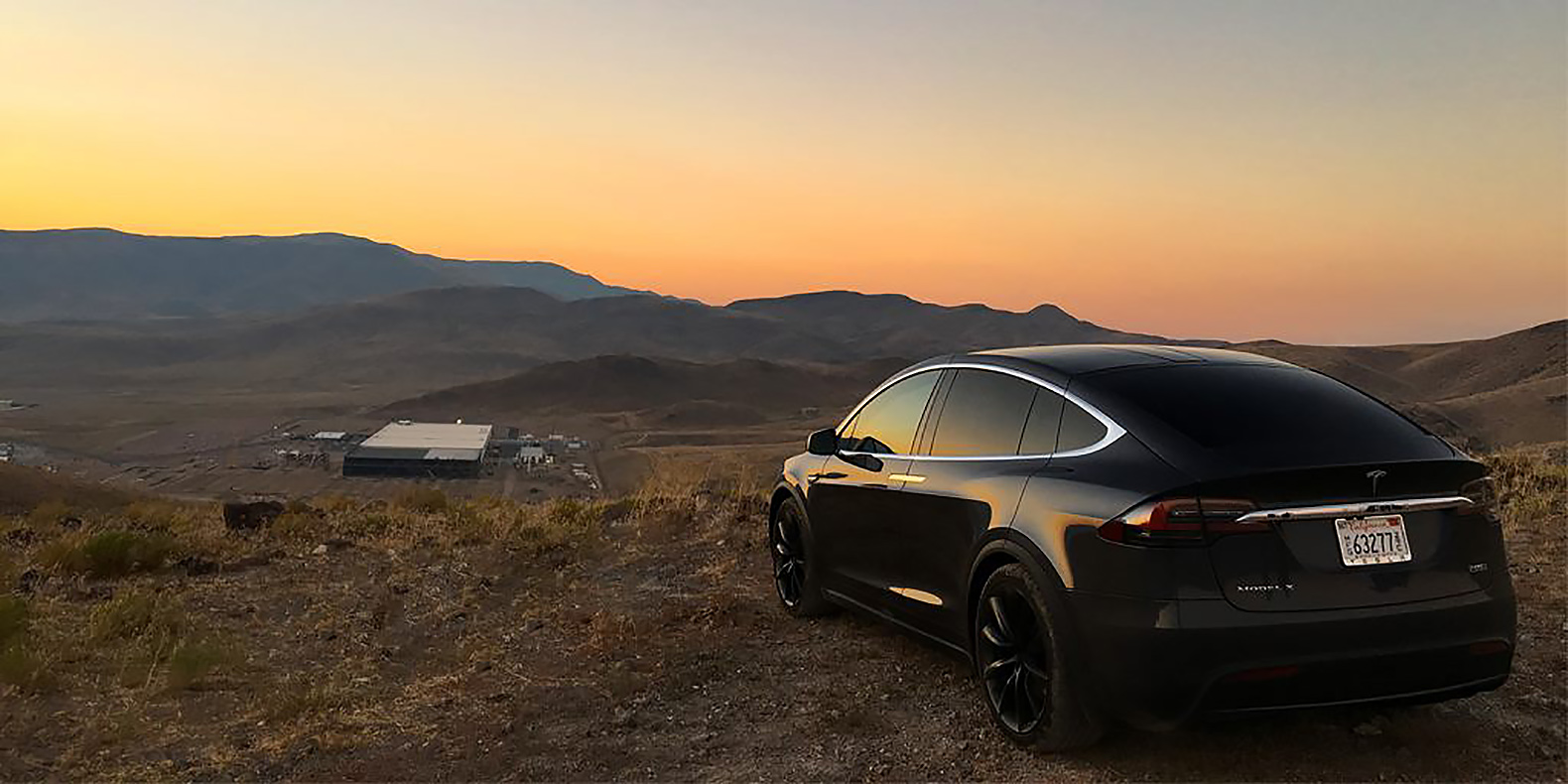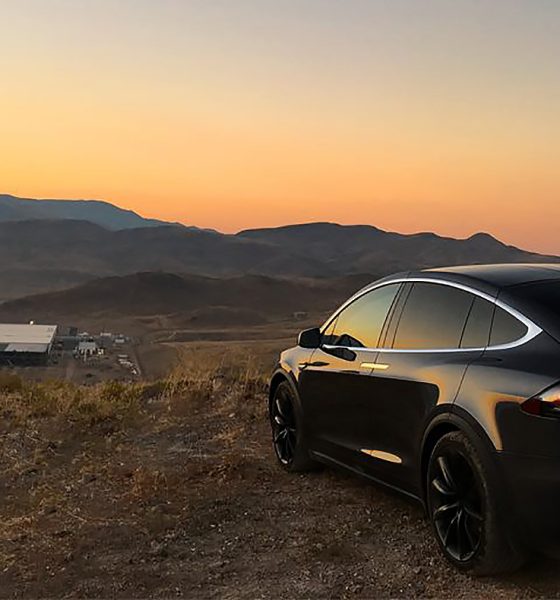

News
Tesla is looking to build a lithium battery raw material factory in Indonesia, claims report
A recent report from one of Indonesia’s oldest news agencies has stated that American electric car maker Tesla is looking to build a lithium battery raw material factory in the Morowali Industrial Park (IMIP) area, located in the Central Sulawesi province, Indonesia.
The update comes amidst the recent comments of Maritime Affairs Coordinating Minister Luhut Binsar Pandjaitan, who named Tesla as one of the companies that are reportedly looking to build battery facilities in the region. Speaking at the Presidential Palace in Jakarta on Tuesday, Pandjaitan mentioned that Contemporary Amperex Technology (CATL) and LG would also be operating their own facilities in the Morowali area.
Provided that the facility does break ground, Tesla’s lithium battery raw material factory in Indonesia will reportedly be aiming for completion in around three years.
While Tesla is yet to announce or confirm the reports from the Indonesian media outlet, the country’s government is already preparing to welcome the arrival of the massive battery companies, including the Silicon Valley-based electric car maker. Pandjaitan, for his part, claimed that a Presidential Regulation (Perpres) for Electric Vehicles would soon be signed by Indonesian President Joko Widodo.
“It was completed. The president may sign the perpres (presidential decree) in the next few days,” the Maritime Affairs Coordinating Minister said, according to Antara News.
Once signed, companies such as CATL, LG, and Tesla will be able to avail of several incentives. Among these is the elimination or reduction of taxes, as well as the exemption of import duties related to the needs of the companies’ operations.
Antara is one of Indonesia’s oldest news agencies. Founded in 1937 while the country was still a Dutch colony, Antara has emerged as the country’s national news agency. It is also the only agency authorized by the State to distribute news materials created by foreign media organizations. With this in mind, the reports of Tesla’s interest in Indonesia’s Morowali area are, at the very least, being related by one of the country’s most legitimate media organizations.
Tesla has expressed its intention to develop and produce its own battery cells. During the 2019 Annual Shareholder Meeting, Tesla CTO JB Straubel and VP for Technology Drew Baglino, together with CEO Elon Musk, spoke about the company’s need to secure large-scale battery cell production. Musk even commented that Tesla could end up in the mining business to acquire the necessary materials for its vehicles’ and energy storage products’ cells.
Reports from CNBC last month have also suggested that Tesla is already in the process of designing its own battery cells at a “skunkworks lab” located in the company’s Kato Road facility, just a few minutes from the Fremont, CA factory. According to the publication’s sources, Tesla is currently researching ways to make its batteries better, and coming up with ways to mass-produce the cells in a faster, more efficient manner.

News
Tesla FSD fleet is nearing 7 billion total miles, including 2.5 billion city miles
As can be seen on Tesla’s official FSD webpage, vehicles equipped with the system have now navigated over 6.99 billion miles.

Tesla’s Full Self-Driving (Supervised) fleet is closing in on almost 7 billion total miles driven, as per data posted by the company on its official FSD webpage.
These figures hint at the massive scale of data fueling Tesla’s rapid FSD improvements, which have been quite notable as of late.
FSD mileage milestones
As can be seen on Tesla’s official FSD webpage, vehicles equipped with the system have now navigated over 6.99 billion miles. Tesla owner and avid FSD tester Whole Mars Catalog also shared a screenshot indicating that from the nearly 7 billion miles traveled by the FSD fleet, more than 2.5 billion miles were driven inside cities.
City miles are particularly valuable for complex urban scenarios like unprotected turns, pedestrian interactions, and traffic lights. This is also the difference-maker for FSD, as only complex solutions, such as Waymo’s self-driving taxis, operate similarly on inner-city streets. And even then, incidents such as the San Francisco blackouts have proven challenging for sensor-rich vehicles like Waymos.
Tesla’s data edge
Tesla has a number of advantages in the autonomous vehicle sector, one of which is the size of its fleet and the number of vehicles training FSD on real-world roads. Tesla’s nearly 7 billion FSD miles then allow the company to roll out updates that make its vehicles behave like they are being driven by experienced drivers, even if they are operating on their own.
So notable are Tesla’s improvements to FSD that NVIDIA Director of Robotics Jim Fan, after experiencing FSD v14, noted that the system is the first AI that passes what he described as a “Physical Turing Test.”
“Despite knowing exactly how robot learning works, I still find it magical watching the steering wheel turn by itself. First it feels surreal, next it becomes routine. Then, like the smartphone, taking it away actively hurts. This is how humanity gets rewired and glued to god-like technologies,” Fan wrote in a post on X.
News
Tesla starts showing how FSD will change lives in Europe
Local officials tested the system on narrow country roads and were impressed by FSD’s smooth, human-like driving, with some calling the service a game-changer for everyday life in areas that are far from urban centers.

Tesla has launched Europe’s first public shuttle service using Full Self-Driving (Supervised) in the rural Eifelkreis Bitburg-Prüm region of Germany, demonstrating how the technology can restore independence and mobility for people who struggle with limited transport options.
Local officials tested the system on narrow country roads and were impressed by FSD’s smooth, human-like driving, with some calling the service a game-changer for everyday life in areas that are far from urban centers.
Officials see real impact on rural residents
Arzfeld Mayor Johannes Kuhl and District Administrator Andreas Kruppert personally tested the Tesla shuttle service. This allowed them to see just how well FSD navigated winding lanes and rural roads confidently. Kruppert said, “Autonomous driving sounds like science fiction to many, but we simply see here that it works totally well in rural regions too.” Kuhl, for his part, also noted that FSD “feels like a very experienced driver.”
The pilot complements the area’s “Citizen Bus” program, which provides on-demand rides for elderly residents who can no longer drive themselves. Tesla Europe shared a video of a demonstration of the service, highlighting how FSD gives people their freedom back, even in places where public transport is not as prevalent.
What the Ministry for Economic Affairs and Transport says
Rhineland-Palatinate’s Minister Daniela Schmitt supported the project, praising the collaboration that made this “first of its kind in Europe” possible. As per the ministry, the rural rollout for the service shows FSD’s potential beyond major cities, and it delivers tangible benefits like grocery runs, doctor visits, and social connections for isolated residents.
“Reliable and flexible mobility is especially vital in rural areas. With the launch of a shuttle service using self-driving vehicles (FSD supervised) by Tesla in the Eifelkreis Bitburg-Prüm, an innovative pilot project is now getting underway that complements local community bus services. It is the first project of its kind in Europe.
“The result is a real gain for rural mobility: greater accessibility, more flexibility and tangible benefits for everyday life. A strong signal for innovation, cooperation and future-oriented mobility beyond urban centers,” the ministry wrote in a LinkedIn post.
News
Tesla China quietly posts Robotaxi-related job listing
Tesla China is currently seeking a Low Voltage Electrical Engineer to work on circuit board design for the company’s autonomous vehicles.

Tesla has posted a new job listing in Shanghai explicitly tied to its Robotaxi program, fueling speculation that the company is preparing to launch its dedicated autonomous ride-hailing service in China.
As noted in the listing, Tesla China is currently seeking a Low Voltage Electrical Engineer to work on circuit board design for the company’s autonomous vehicles.
Robotaxi-specific role
The listing, which was shared on social media platform X by industry watcher @tslaming, suggested that Tesla China is looking to fill the role urgently. The job listing itself specifically mentions that the person hired for the role will be working on the Low Voltage Hardware team, which would design the circuit boards that would serve as the nervous system of the Robotaxi.
Key tasks for the role, as indicated in the job listing, include collaboration with PCB layout, firmware, mechanical, program management, and validation teams, among other responsibilities. The role is based in Shanghai.
China Robotaxi launch
China represents a massive potential market for robotaxis, with its dense urban centers and supportive policies in select cities. Tesla has limited permission to roll out FSD in the country, though despite this, its vehicles have been hailed as among the best in the market when it comes to autonomous features. So far, at least, it appears that China supports Tesla’s FSD and Robotaxi rollout.
This was hinted at in November, when Tesla brought the Cybercab to the 8th China International Import Expo (CIIE) in Shanghai, marking the first time that the autonomous two-seater was brought to the Asia-Pacific region. The vehicle, despite not having a release date in China, received a significant amount of interest among the event’s attendees.








